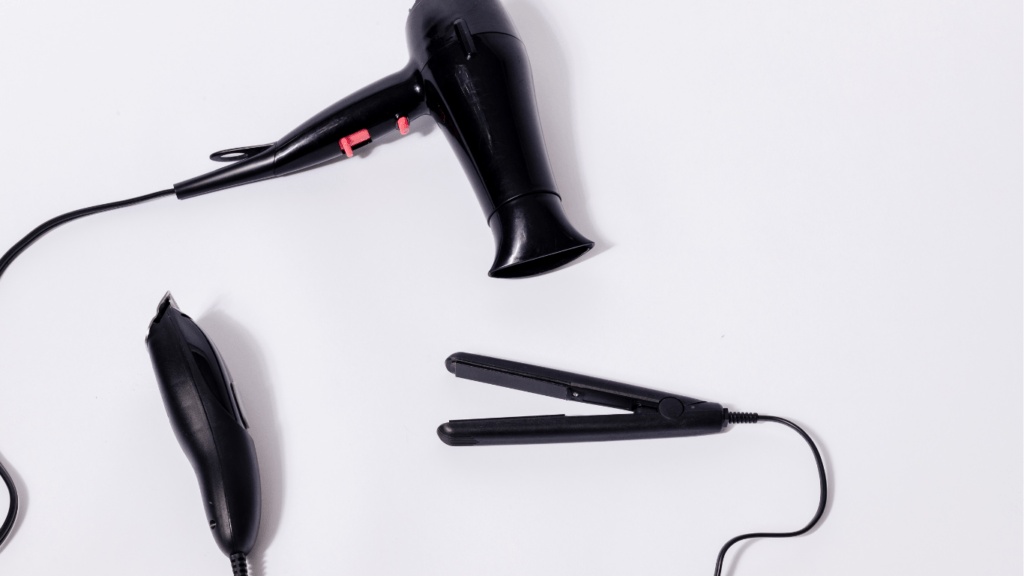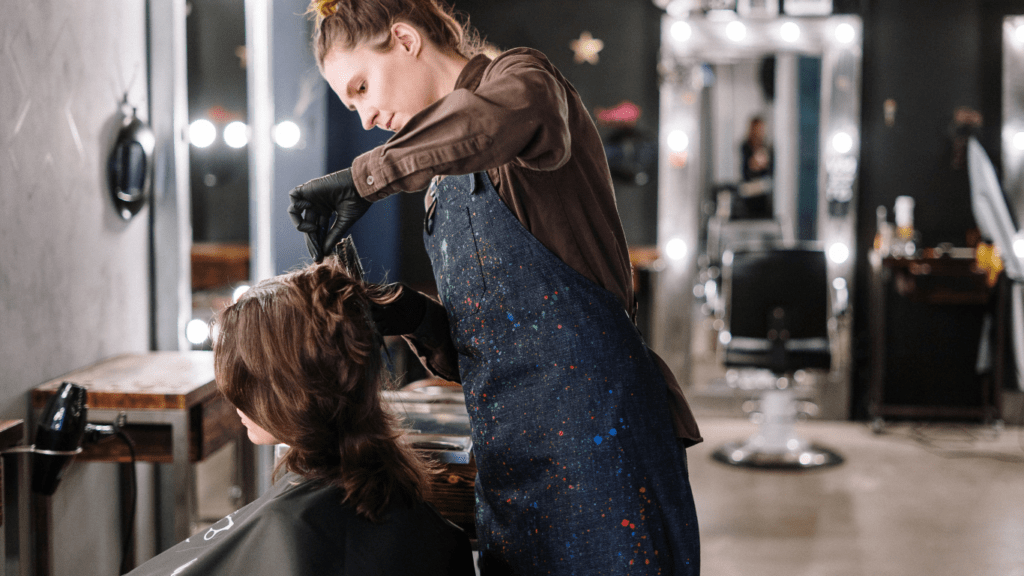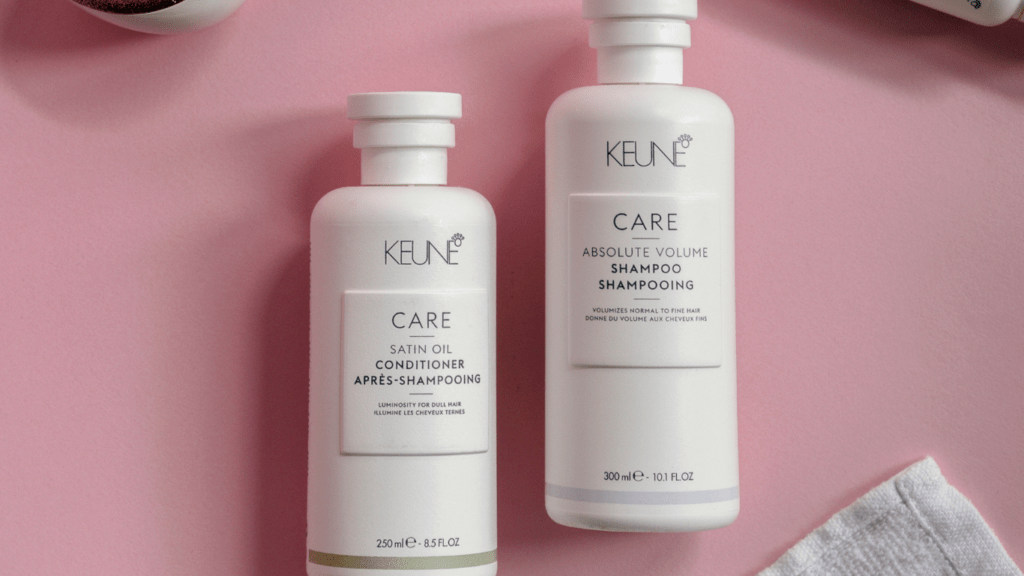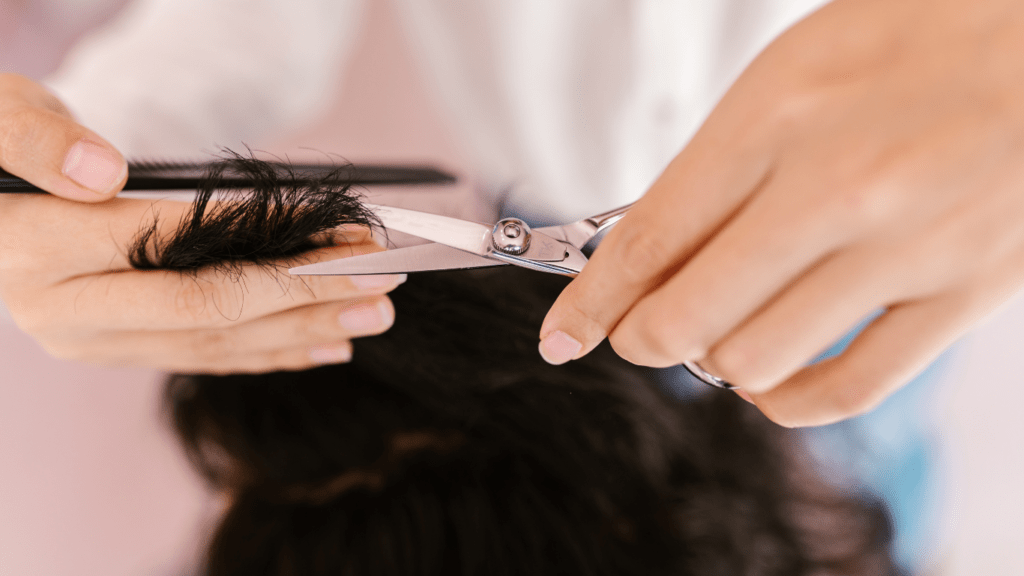Understanding Heat Damage
Heat damage weakens hair, leading to dryness and brittleness. High temperatures from styling tools break down hair proteins. Bent strands and split ends are common signs. With repeated exposure, hair loses its natural luster and elasticity.
Styling tools like:
- flat iron
- curling wands
- hairdryers contribute to heat damage if used frequently
Even at lower temperatures, prolonged use inflicts harm. Ceramic, titanium and tourmaline plates on devices distribute heat evenly, yet they can still damage hair without proper precautions.
Natural hair protection diminishes with each heat application. Hair cuticles, the outermost layer, become raised and porous. This makes hair more susceptible to environmental stressors and breakage.
Moisture loss is another consequence. Heat evaporates hair’s natural oils, leaving it dull and coarse. Hydration must be restored to maintain healthy hair texture.
To avoid heat damage, use protective products like heat protectant sprays and serums. These create a barrier between hair and heat. Regular conditioning treatments also replenish lost moisture. Reducing the frequency and temperature of heat styling can preserve hair health.
Choosing the Right Tools

Selecting the right styling tools is crucial to minimize heat damage. Prioritize high-quality products designed to protect hair.
Hair Dryers
Look for hair dryers with adjustable heat settings, ceramic or tourmaline technology, and a cool shot button.
- Ceramic dryers distribute heat evenly, reducing the risk of hotspots that damage hair strands.
- Tourmaline dryers emit negative ions, which help to lock in moisture and add shine.
- The cool shot button sets your style while sealing the hair’s cuticle, preventing frizz.
Flat Irons
Choose flat irons with ceramic, tourmaline, or titanium plates. Ceramic plates offer consistent heat distribution, minimizing damage. Tourmaline plates generate negative ions, which help to smooth hair and reduce static. Titanium plates heat up quickly and evenly, making them suitable for thicker hair types. Look for flat irons with adjustable temperature controls to cater to different hair textures.
Curling Irons
Select curling irons with ceramic, tourmaline, or titanium barrels. Ceramic barrels ensure even heat distribution, protecting your hair. Tourmaline barrels enhance shine by releasing negative ions, reducing frizz. Titanium barrels provide efficient heat, ideal for coarse or thick hair. Opt for curling irons with adjustable heat settings and a safety timer to prevent overheating.
Heat Protection Products
Heat protection products are essential for safeguarding hair from the harmful effects of styling tools. Choosing the right products can help maintain hair health and prevent damage.
Sprays and Serums
Heat protectant sprays and serums offer a convenient way to shield hair from high temperatures. These products form a barrier that reduces direct heat exposure, minimizing protein breakdown and moisture loss. I recommend using sprays with ingredients like silicone or keratin, which add a protective layer and enhance shine.
An example of a popular heat protectant spray is the Tresemmé Thermal Creations Heat Tamer, which is lightweight and easy to apply. Serums like the OGX Protecting + Silk Blowout Thermal Primer are also effective, offering additional benefits like frizz control and smoothness.
Leave-in Conditioners
Leave-in conditioners not only hydrate and detangle hair but also offer heat protection. When applied before heat styling, these products help retain moisture and add an extra layer of defense against heat damage.
A leave-in conditioner like the It’s a 10 Miracle Leave-In Product not only protects from heat but also enhances hair strength and manageability. Using a leave-in conditioner is beneficial, especially for those with dry or damaged hair, as it provides continuous protection and nourishment throughout the day.
Best Practices for Heat Styling
Using proper techniques and tools preserves hair health and prevents damage from heat styling devices.
Ideal Temperature Settings
Setting the right temperature ensures optimal styling without causing harm. Fine or damaged hair benefits from lower settings, typically below 300°F. Normal hair can handle medium settings around 300°F to 350°F. For thick or coarse hair, temperatures up to 400°F are generally safe. Always start at a lower temperature and increase if necessary. Adjusting settings depending on hair type minimizes the risk of heat damage.
Sectioning Your Hair
Sectioning your hair simplifies the styling process and improves results. Divide hair into manageable parts using clips. Working with small sections allows even heat distribution and better control. Avoid overlapping sections to prevent excessive heat exposure. Proper sectioning ensures each strand receives equal attention, reducing the likelihood of over-styling and damage.
Using Heat Protectants
Applying heat protectants is crucial before using any styling tool. Choose sprays, serums, or creams specifically designed for heat protection. Products containing silicone or keratin shield hair from high temperatures, reducing protein breakdown. Spray or apply evenly from roots to tips, ensuring full coverage. Incorporating heat protectants into your routine significantly minimizes damage, maintaining the hair’s health and shine.
Post-Styling Care
Post-styling care strengthens and enhances hair health after heat exposure. Use specific treatments to maintain hair vitality and reduce damage.
Deep Conditioning Treatments
Deep conditioning treatments restore moisture and repair damage. Use these treatments weekly to replenish lost hydration. Select products containing strengthening ingredients like proteins, oils, or vitamins. For example, conditioners with argan oil, keratin, or biotin greatly improve hair texture. Ensure even application from roots to tips, then leave the product on for at least 15 minutes for maximum absorption.
Regular Trims
Regular trims prevent split ends and keep hair looking healthy. Schedule trims every 6-8 weeks to remove damaged or split ends. By eliminating damaged ends, you reduce the risk of further breakage and maintain overall hair health. Trimmed hair also looks fuller and shinier, giving a healthier appearance.
By integrating deep conditioning treatments and regular trims into post-styling care, maintain hair’s strength and vitality, even with heat styling.


 Bonnie Brown is an expert in holistic wellness with over a decade of experience in natural health and skincare. She has dedicated her career to helping individuals achieve radiant health through plant-based solutions and mindful self-care practices. Bonnie is passionate about blending ancient traditions with modern wellness techniques, making her insights a valuable resource for anyone on a journey to healthier skin and overall well-being.
Bonnie Brown is an expert in holistic wellness with over a decade of experience in natural health and skincare. She has dedicated her career to helping individuals achieve radiant health through plant-based solutions and mindful self-care practices. Bonnie is passionate about blending ancient traditions with modern wellness techniques, making her insights a valuable resource for anyone on a journey to healthier skin and overall well-being.
